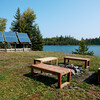
What's Your Favourite Memory of Sudbury's Iconic Superstack?
When I first moved to my current city, one with a distinct industrial skyline, there were two routes into town: one took me along a tree-lined boulevard with lakes on both sides and a castle. The other involved driving past steel factories. Often, some of the stacks would be blowing flames. On a bad day, I’d catch the scent of smelting steel.
Sudbury, Ontario’s Vale-Inco Superstack elicits a similar complicated response in those who live in the region. This record-breaking chimney stands as a tangled ode to industry and its growing attempts to regulate the damage it does (see: Sudbury's successful regreening efforts honoured by Jane Goodall in her documentary Reasons For Hope). It is also, for many, a symbol of home.
The book Sudbury Superstack: A Changing Skyline by the Sudbury Writers’ Guild is an artfully arranged anthology of prose, poetry, interviews, collages, and photos. As Jamie West, MPP Sudbury, notes in the Foreword, Sudbury Superstack: A Changing Skyline is a keepsake that honours the complexity of the Superstack as both a source of income and a reminder of home.
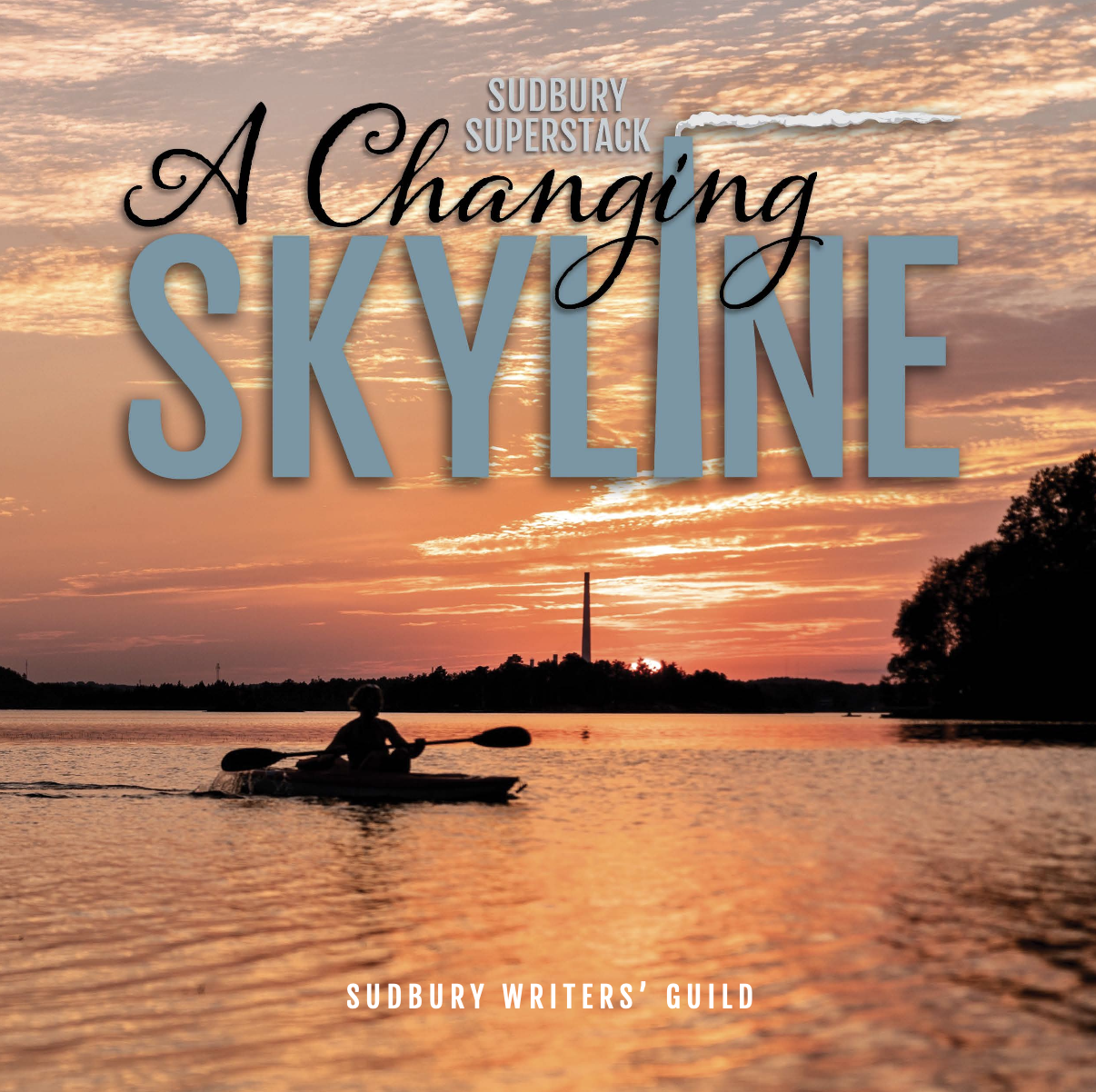
A detailed account of how the Superstack shaped a community
The Vale-Inco Superstack was built in 1970 to disperse by-products of the smelting industry such as sulfuric gasses away from the city of Sudbury. Notable as the world’s tallest freestanding chimney from the time it was built in 1970 until the construction of the Ekibastuz GRES-2 Power Station in 1987, the Superstack has had a profound effect on those who live near it, one that transcends the impact it had on local pollution levels. The works in Sudbury Superstack: A Changing Skyline touch on multiple aspects of the structure from its purpose to its materials to its response to a tornado that hit Sudbury on the final day of building on the stack. (Currently decommissioned and slated for demolition, the stack’s days are numbered, making this anthology all the more timely).

Part of the anthology’s charm lies in how it has the Superstack representing both communal and personal experience. The contributors’ bios reveal multiple writers and artists with connections to Sudbury and northern Ontario.
From prose essays such as Scott Miller’s The Politics of Pollution, we learn about the history of health concerns raised about nickel mining and the Ontario government’s refusal to deal with them. Miller writes, “The Superstack’s…legacy serves as a testament to Sudbury’s longstanding history of conflict surrounding industrial waste and environmental reclamation.” Miller’s factual essay, placed early in the book, provides context for the Superstack’s presence in this northern mining town.
The first-hand accounts collected in Sudbury Superstack: A Changing Skyline offer us lived experience from the construction of the Superstack to working inside it. In the interview, “Ron’s Story,” we learn about the lengths taken to monitor emissions; in the piece about Charles E. Young, we grasp the daunting task of working for the Superstack, “the largest single point source of sulphur emissions leading to acid rain in North America;” and in Louis Leduc’s memoir, “Catwalk,” Sudbury’s former Poet Laureate, Thomas Leduc paints a graphic picture of watching the Superstack being built. One poet likens the chimney to a “giant smoking.”
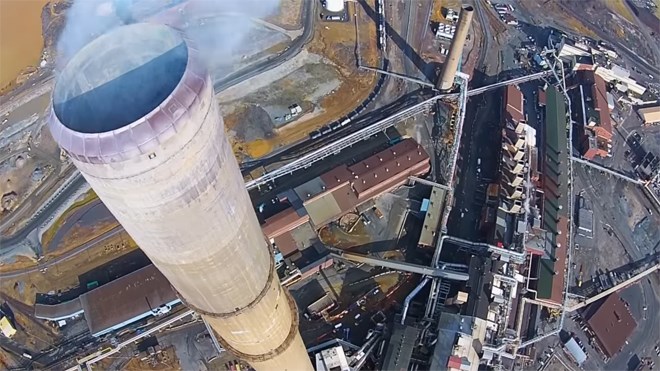
A striking visual record of Sudburian life with the Superstack
The photographs and collages of the Superstack are a welcome addition. From historical photos of industry to the record-breaking chimney poised against an orange sky, the photos give context to the stories. Especially striking is a photo provided by Liisa Kovala of her father on a girder with a cement bucket and no safety gear. It’s a testament to the fearlessness of miners and builders and evokes “Lunch atop a Skyscraper”, the famous photo taken in 1932 of 11 ironworkers sitting on a steel beam of the RCA building in Manhattan, 850 metres above the ground.
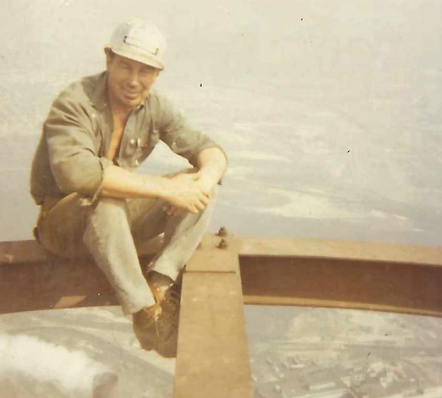
Many of the works in the collection are sentimental, offering recollections of childhoods spent with the Superstack as a fixture. A common observation is that the sight of the Superstack chimney when driving north represented a sign to Sudbury natives that they were almost home. A critique in the Afterword asks whether memories really help us understand the larger issues.
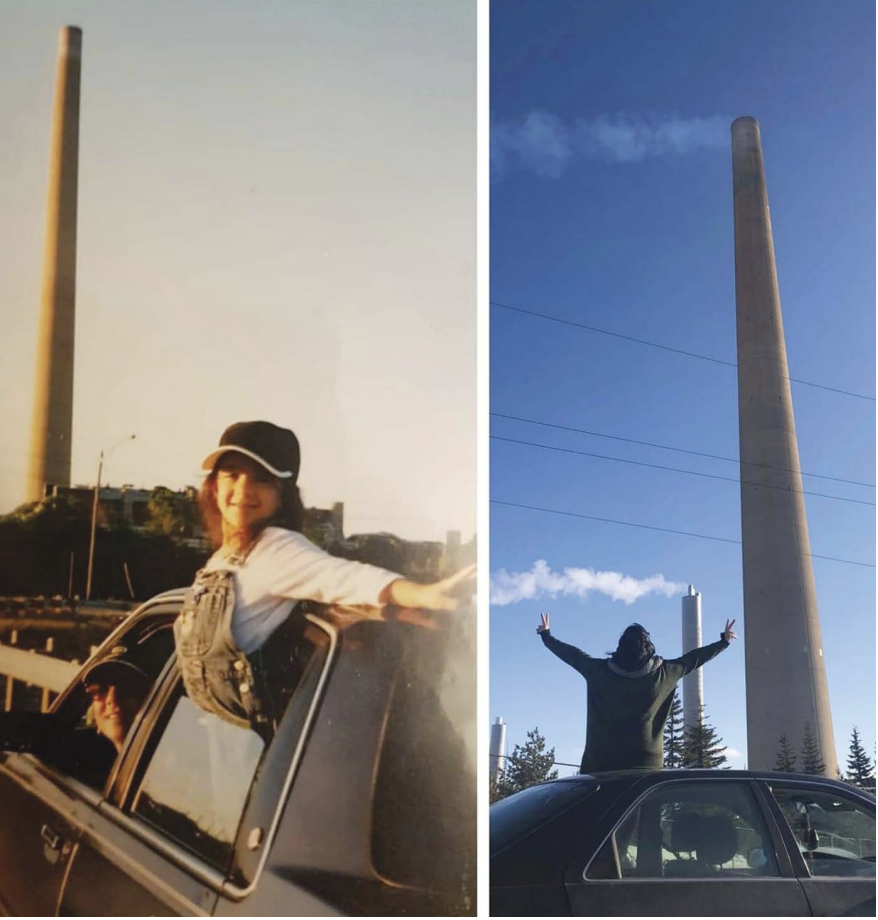
Sudbury Superstack: A Changing Skyline provides an indispensable portrait of Sudbury's concerns
The themes of nostalgia and home lead to some repetition of observations in the book. However, in a way the effect is cumulative. As well, the book’s design and its braiding of pieces of multiple genres invite readers to dip in and out of its pages.
Some writers in Sudbury Superstack: A Changing Skyline evoke images of Sudbury’s polluted nature in the haunting images of their reflections. For instance, in “Before the Stack,” Matthew Del Pappa says, “my childhood involved climbing over bare black rock and camping amidst the region’s pollution-stunted forests.” As well, Thomas Leduc describes “…a yellow haze of sulphur so thick/we taste it on our teeth.” Finally, in “Homing Beacon,” Melanie Marttile writes, “There was no escape from that bitter fuzz…my throat would ache with it” and “Slag poured from cauldrons like lava, sizzling down the hill in traceries of red and orange light, steam and heat billowing into the night sky.” Compiled together, these works give a blazing impression of the north’s blighted beauty.
The encounters with pollution along with the nostalgic pieces and detailed accounts of workers’ experiences, make Sudbury Superstack: A Changing Skyline an indispensable portrait of a northern Ontario city, its industry, its environmental concerns, and the sentiments of those who live there.
Where to purchase Sudbury Superstack: A Changing Skyline
Books are available to purchase from the Sudbury Writer’s Guild via this online form. The books are also available in various locations around the city including Science North and Books and Beans. The cost is $25 plus shipping.
Recommended Articles

Top 10 Things To Do in Northern Ontario

See the Leaves Change: Fall Colour Report Ontario 2025

7 Amazing Northern Ontario Islands You Must Visit

The Agawa Rock Pictographs

6 Dark Sky Preserves in Ontario

Best Vinyl Record Stores Ontario (That aren't in the GTA)

The World's Smallest Record Store Is Not Where You'd Expect
The Northern Ontario Beer Trail: 8 Essential Stops For Beer Lovers

12 Times TikTok Was So Northern Ontario

7 Species Worth Fishing for in Ontario

10 Sights To See By Motorcycle In Northern Ontario

A Road Trip to Red Lake

The Eagle

Pride Events in Northern Ontario 2025

How to Book a Campsite in Ontario

9 Films About Northern Ontario You Have To Watch

7 Stompin’ Tom Connors Songs About Northern Ontario

17 Amazing (and Random) Vintage Ontario Tourism Ads That Will Definitely Make You Want to Travel This Summer








